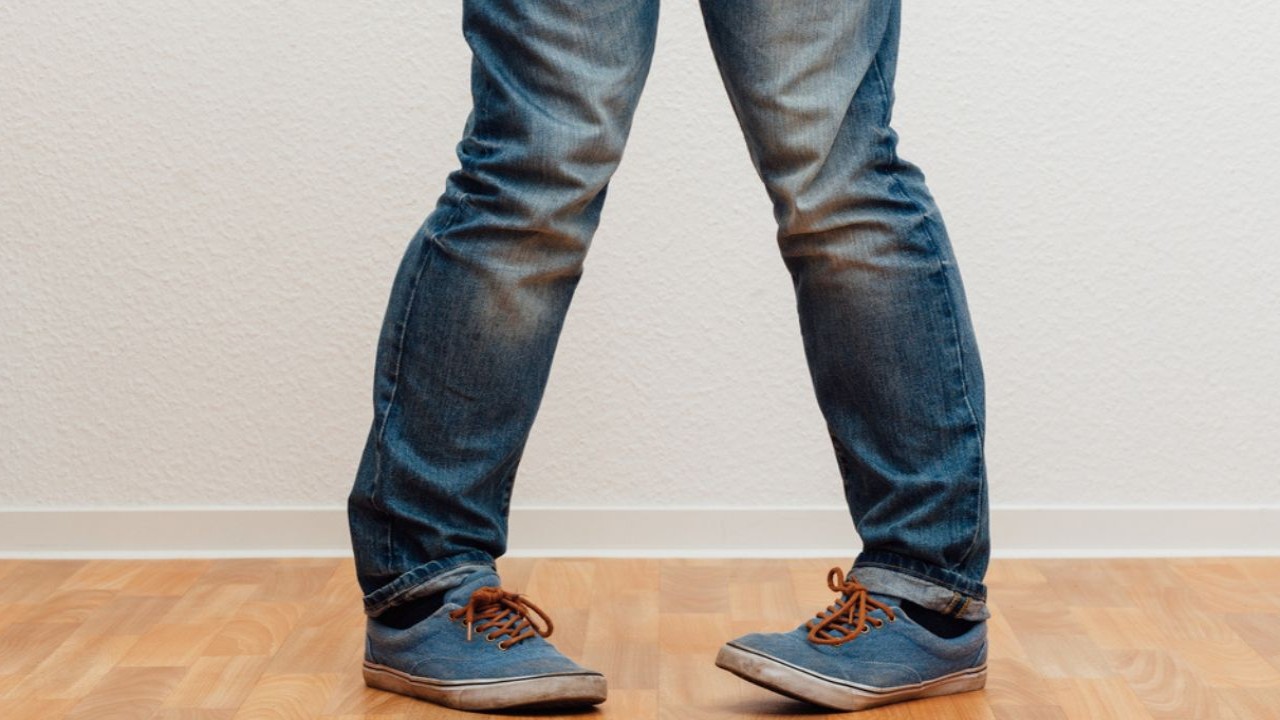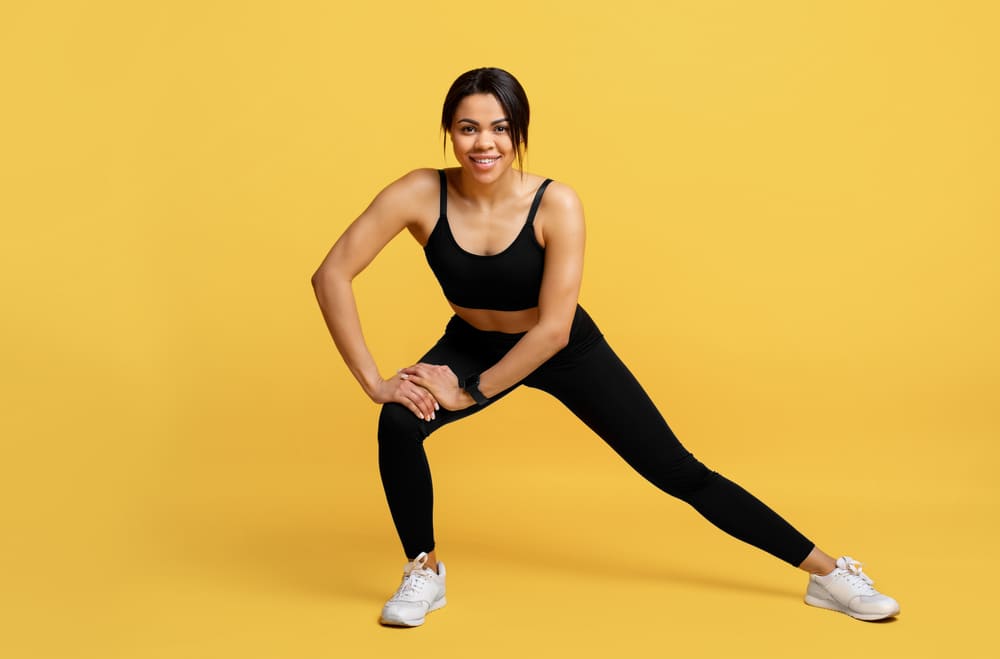6 Best Knock Knee Exercises to Fix Posture at Home
Knock knee occurs when the knees bend inward. Here are 6 knock knee exercises that help you boost your leg alignment, strengthen muscles, and improve stability.

Children commonly go through normal leg changes during their growth, including temporary knock knees which revert with maturity. However, knock knees that continue beyond a certain age are often severe. In such cases knock knee exercises help to stabilize and strengthen your leg muscles.Furthermore, if it affects just one knee then it may cause imbalance. They may even be able to stop the condition from worsening. Here are 6 such effective exercises to correct knock knees and improve posture.
What Are Knock Knees?
Knock-knees, also known as genu valgum, is a condition where the knees are turned inward. It creates a gap between the ankles when standing with knees together. In severe cases, people may struggle to bring their feet together while straightening their legs. These are typically bilateral conditions that affect both legs. But there are instances where it may only impact one knee.
This condition is common in young children between 2 to 5 ages. It often improves naturally as they grow. However, in some cases, the condition can persist or worsen, especially if it is caused by a disease like rickets (1). According to Chief Brabon, a Certified Fitness Master and Co-Founder and Head Coach at TransformationCoach, “Increasing a child's intake of Vitamin D will help them better absorb both calcium & phosphorus, which can help cure rickets.”. Chief Brabon further says, “It is more common that advanced arthritis can lead to knock knees, rather than the other way around”
Here, let’s further discover the factors that cause knock knees.
Reason for Knock Knees
Understanding the underlying cause of knock knees will help in treating them better. Especially when present in adults or older children.
This often happens randomly but can sometimes run in families. However, there are other factors that can contribute to knock knees, such as
1. Knee Or Leg Injuries:
If the growth region of the thighbone or shinbone is injured, it can cause knock knees. Especially it can lead to deformity in one knee (2).
2. Rickets:
Nutritional rickets can occur due to poor lifestyle habits like not getting enough sunlight, which is the main source of vitamin D. Another factor is not consuming enough calcium in your diet (1). Some rickets can also be caused by genetic abnormalities that can lead to knock knees.
3. Bone Infections:
Sometimes, if you have a bone or joint infection, it can cause septic arthritis. This may have a severe impact on knee health. In more severe cases, it can even result in genu valgum (knock knees) (3), (4). Chief Brabon further says, “It is more common that advanced arthritis can lead to knock knees, rather than the other way around”
4. Certain Diseases:
Osteochondrodysplasias are a group of genetic bone diseases that can cause various bone deformities in the limbs and spine. Knock knees are one of the common symptoms of these conditions (5).
5. Obesity:
Being obese can increase the likelihood of developing knock knees or walking abnormalities that resemble knock knees. In fact, a study reported that 71% of children with knock-knees were also obese, which could make the condition worse (6).
What Are the Symptoms of Knock Knees
Usually, knock knees are nothing to worry about in young children. Children usually have a bit of a bow leg until they start walking, which is usually around 12 to 18 months. But their legs straighten out as they grow. If knock knees continue into adulthood, they may come with additional symptoms like (2)
- Stiff joints
- Knee pain
- Ankle or foot pain
- Out-toed gait or waddle walking
- A noticeable limp when walking
The strain on ligaments and muscles can even cause discomfort in the hips, ankles, or feet. Especially, when only one knee is misaligned, it can affect your overall balance.
Simple Knock Knee Exercise to Try at Home

While knock knee cannot be prevented, its impact can be reduced. Exercise and physical therapy are commonly effective alternatives to surgery.
Before diving into knock knees exercises, here are a few things to keep in mind:
- Skip exercises that involve aerobics or running to avoid any potential knee injuries. Instead, try stretches for knock knees.
- It's important to get a proper clinical diagnosis to rule out any underlying health conditions. Self-diagnosing and treating knocked knees with exercises might not be the best approach without knowing the cause.
- By being cautious and seeking professional help, you can ensure a safer and more effective workout routine for your knocked knees.
Simple strengthening exercises like seated or lying leg raises, along with the addition of leg weights, can help realign and stabilize the knees. These exercises target the leg, hip, and thigh muscles. Additionally, specific stretches can also provide relief from symptoms. Here let’s see how to fix knock knee with some simple exercises.
1. Butterfly Flutters
This yoga-like exercise stretches the kneecap and nearby muscles. This helps to correct their alignment over time.
Targets: Knees, hips, and inner thighs.
Steps to Follow
- To start with, sit down comfortably.
- Bend your knees and ensure that the soles of your feet are touching.
- You can either hold onto your feet with interlaced fingers or place your hands on your ankles or shins.
- Keep your spine long and your chest open.
- Your shoulders should be relaxed and kept away from your ears.
- Stay in this position for 1 minute or flutter your legs quickly in cycles.
- To come out of the pose, straighten your legs and lean back on your hands.
- Try a minimum of 2 to 3 sets of 8 to 10 repetitions.
2. Side Lunges
Side lunges are great for toning your legs, especially the inner thighs. They also help align your knees for better posture.
Targets: Legs, hips, and quadriceps
Steps to Follow
- Begin with your feet hip-width apart.
- With your left foot, take a broad step to the left.
- Bend your left knee as you push your hips back, keeping your right leg straight.
- Return to a standing position by stepping back with your left leg.
- Repeat the same steps on the other side by taking a wide step to the right and bending your right knee.
- Continue alternating between left and right-side lunges to complete a minimum of 8 to 10 reps on each side.
3. Leg Raises
Doing leg raises can make your leg muscles stronger. This helps take some pressure off your knees when you are doing daily activities. It will also give a better balanced and prevent accidents.
Targets: Abs, hips, glutes, and quadriceps
Steps to Follow
- Lie down on your back on a comfortable mat or on the floor with your legs extended and your arms by your sides.
- Ensure that your lower back is pressed against the mat or floor.
- Place your hands either palms down, facing the floor, or tuck them under your glutes for added support.
- Pull your belly button towards your spine to engage your core muscles. This will help maintain stability and protect your lower back during the movement.
- Keep your legs straight, and slowly lift them off the ground while maintaining control.
- You can start by lifting your legs to a 90-degree angle with your torso, perpendicular to the floor.
- Hold the raised position for 3 to 4 seconds, focusing on engaging your core and keeping your lower back pressed against the floor.
- Slowly bring your legs back to the starting position.
- Repeat the leg raises for at least 2 to 3 sets of 8 to 10 reps.
4. Cycling
Regular cycling, even for just 30 minutes, is a great knock-knee exercise that can improve knee alignment and stance. Plus, cycling also lubricates the knee joints, easing stiffness and soreness.
Targets: Glutes, calves, quadriceps, and hamstrings.
Steps to Follow:
- Grab a bike and adjust the seat height so that your feet can touch the pedals comfortably. Ensure that the seats are not too low or high.
- Start pedaling in a smooth and consistent motion.
- Keep your back straight and activate your core muscles for stability.
- Slowly increase the pace and continue cycling for at least 30 minutes.
- You can even do the same with stationary bikes at the gym.
5. Sumo Squats
Sumo squats are effective for treating knock knees as they push the kneecap and muscles into the correct position. When performing sumo squats, you'll notice that your knees turn outward, which helps with alignment.
Targets: Inner thighs, calves, glutes, hamstrings, and quads.
Steps to Follow
- Stand with your feet, shoulder-width apart, and turn your toes at an angle of 45 degrees.
- Throughout the entire workout, maintain a straight back and a lifted chest. You can place your hands on your hips or in front of you for balance.
- Bend your knees and pull your hips back to lower your body.
- Aim to bring your thighs parallel to the ground, or as close to that position as you can comfortably achieve.
- Make sure your knees are in line with your toes as you squat down. Also, try not to let your knees cave in.
- Pause for a moment at the bottom of the squat, then push through your heels to rise back up to the starting position.
- Repeat the sumo squats for 2 to 3 sets of 8 to 10 reps.
6. Clamshells
The clamshell exercise is a popular choice among physical therapists for knee pain. It's also the go-to exercise for strengthening the hips and core.
Targets: Glutes, thighs, and hip.
Steps to Follow
- Lie down on one side with your knees slightly bent and stack your legs on top of each other.
- Keep your bottom leg on the floor.
- Make sure your knees, hips, and shoulders are all in a straight line.
- Slowly exhale and raise your top knee upwards, while keeping your feet together. Your legs must look like an open clamshell.
- Inhale as you bring your top knee back down to close your legs.
- Turn around and perform the exercise on the opposite side.
- Repeat this movement of raising and lowering your knee 8 to 10 times on each side.
You can even do similar simple exercises with a resistance band at home. Just hook it to a sturdy object like a chair or table leg, and make sure it's around ankle height. Now fasten the band to the outer side of your leg and gradually lift it. Hang in there for a solid 2 seconds, and then gently lower your leg back down. This has a mild effect on controlling your knee direction.
Benefits of Knock Knee Exercise
For knock knee conditions, all of the above-mentioned exercises have the following benefits.
- Reduces leg and back pain.
- Helps with weight loss, and prevents obesity.
- Improves posture and body stability.
- Increases flexibility.
- Supports daily activities such as walking.
Here are some additional tips on how to fix knock-knee in adults.
- Wear well-fitting shoes as your everyday shoes that provide support to your knees and ankle joints.
- Consider leg braces or orthotic shoes for extra support and gait correction. At times, it also prevents the inward rolling of the feet (7). But they can’t be replaced with surgical treatments.
- You can also combine yoga with physical exercises for knock knee to get optimal results.
- Follow a diet that supports bone and joint health. Try to add a variety of calcium and vitamin D-rich foods to your diet (8).
Exercise for Knee Knocks vs Surgery
Surgery is usually the last resort for severe cases of knock knees when other methods like stretching, exercises, and weight loss don't provide relief from severe pain.
Osteotomy is a common surgical treatment performed on older teens and adults (9). It involves removing a portion of the leg bone near the knee and adjusting it to permanently correct the alignment of the knee. In more severe cases, knee replacement surgery may be recommended by the doctor.
Conclusion
Incorporating knock knee exercises into your routine can be highly beneficial. It can improve the strength, stability, and flexibility of your knees. It also relieves pain and realigns the knee. Whether you are dealing with knock knees or looking to prevent potential knee issues, these exercises can help you out. Most adults and older children may find these workouts involving stretches beneficial. But for some, it is better to go with orthotics or braces. Also, don't forget to make some simple lifestyle changes that can add to your benefits.





 JOIN OUR WHATSAPP CHANNEL
JOIN OUR WHATSAPP CHANNEL















































































